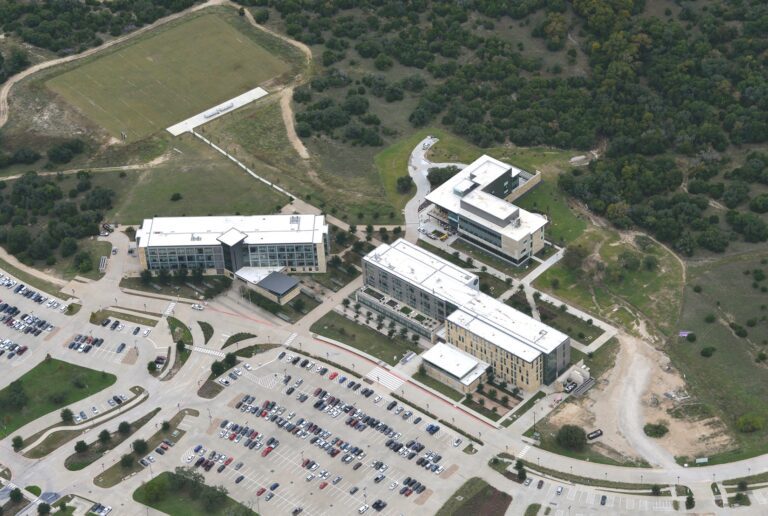
This article originally appeared on Industry Today.
The construction industry experienced multiple headwinds due to the pandemic, and 2022 should be another rewarding, but challenging year.
The past two years have presented many obstacles for the construction industry and despite the economic hurdles associated with the ongoing COVID-19 pandemic, builders continue to adapt and evolve to these unprecedented conditions. Though the market remains fluid and unpredictable, our industry can play a significant role in the nation’s overall economic recovery. The good news is, the 2022 outlook for construction is favorable, with four main stories to keep an eye on this year:
Supply Chain Fatigue
Market fundamentals remain strong right now across the commercial real estate world. Rent rates continue to increase and capitalization rates are down, which is leading to more developments getting financed. However, positive market conditions in the real estate world are creating more challenges for construction. The second half of 2020 exposed the vulnerabilities of global supply chains, causing issues that were expected to stabilize in 2021. Unfortunately, the pandemic induced supply shortages that continued to persist throughout last year and the impact created two problems we’re still faced with today: a lack of materials and a dramatic increase in costs. According to the Associated General Contractors of America, 75% of construction and engineering firms have experienced project delays due to longer lead times or shortage of needed materials. We’re not done fighting these supply chain issues, but these challenges motivate driven builders to be better at what they do – earlier planning, enhanced preconstruction and creative construction solutions.
Market Demand
The Sun Belt region has seen a steady influx of migration since 2015 and there continues to be a high demand for new multifamily properties, specifically in cities like Nashville, Charlotte, Tampa, Austin and Atlanta. As a result of this migration trend, rents are rising in those markets, fueling a development surge with decreasing cap rates. That combination makes multifamily deals financially viable and creates an ideal environment that will generate more opportunities and projects for builders in 2022. Healthcare is also red hot as the number of projects planned for this year is expected to be the largest uptick we’ve seen in the last decade. Healthcare clients are building bigger and better hospitals to meet the demands of the aging population as well as patients who want convenient, accessible healthcare closer to where they live.
Creative Methods and Solutions
Out of all the challenges we have faced throughout the past two years, one positive change leading the evolution of our industry is the increased acceptance of technology and creative, lean building solutions. Healthcare clients have begun to accept modular construction as a way to speed up processes in order to serve patients sooner while overcoming supply chain issues and ongoing labor shortages. In addition, we’re seeing new construction techniques emerge in the United States. Mass timber construction is a newer technique in the US but has been used across Europe for decades. The upfront cost of mass timber construction may be more expensive than steel and concrete, but the long-term benefits outweigh this when factoring in the reduced carbon footprint and overall positive environmental impact of building with a renewable source.
Success and Next Steps in 2022
A success story that has remained true since the beginning of the pandemic is how adaptable and innovative the construction industry is. Builders, architects, trade partners and owners across the country have successfully worked together to overcome persistent challenges by using creative solutions and embracing technology to effectively communicate. Even when face-to-face communication is not an option, our industry has pivoted to virtual technology and maintained a level of professionalism all while building projects that continue to impact communities across the country.
One of the most critical factors for continued success will be to improve recruiting efforts in order to cultivate new talent from diverse backgrounds, work experiences, education levels and locations. The construction industry still lacks diversity. In July 2021, there were 321,000 unfilled positions. About 90% of people employed in construction are white and only 11% are women. Last year’s inaugural “Construction Inclusion Week” was the first step to help build awareness and spark discussions around how we can foster a more inclusive industry. The number of opportunities across a variety of specialties is limitless and there are too many positions open and not enough talent to fill them. To fix this problem, our industry needs to focus on crafting messaging that deflates old, uninformed narratives on construction jobs while showcasing the fast-track career opportunities that are available to new talent pools we’ve yet to reach. This is particularly important as the cost of higher education continues to trend toward unsustainable levels and can help address the significant and ongoing labor shortage challenge our country continues to face.

